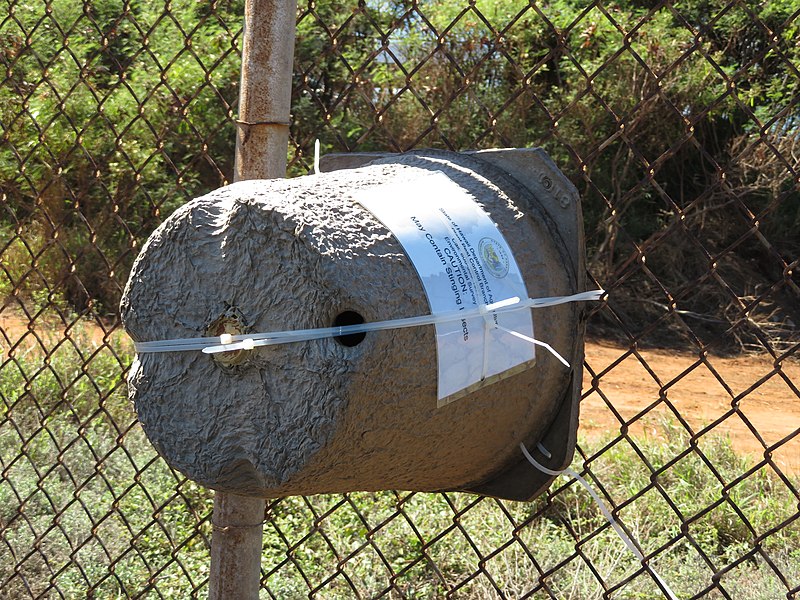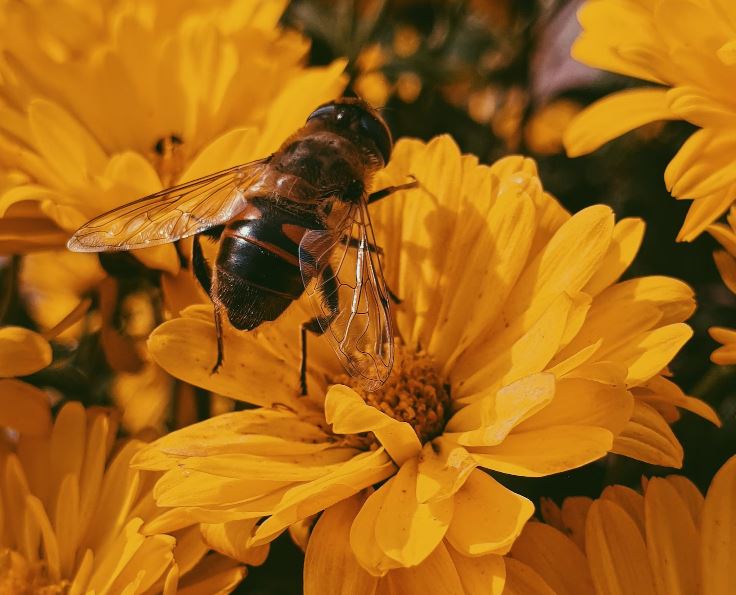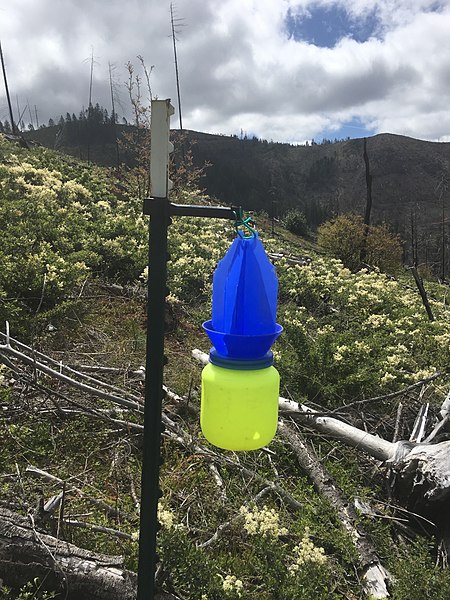Bees are a vital component of the biodiversity on which all life depends for existence. They produce goods like beeswax, propolis, and honey bee venom in addition to high-quality foods like honey, royal jelly, and pollen. At least 90 economically cultivated crops in North America are made possible by bees. Honey bees, which play a crucial role in preserving fruits, nuts, and vegetables in our diets, account for more than 15 billion dollars of the more than 24 billion dollars that pollinators contribute to the US economy.
It is also important to remember that not all bees offer advantages, not just honey bees. Positive effects may come from other, less frequent social bees that are part of the genus Apis mellifera. Bumble bees and alfalfa leafcutter bees are two examples of native wild pollinators that significantly boost domestic productivity.
A significant source of income for many rural communities is beekeeping. The western honey bee is the most common managed pollinator in the world, and it is expected that more than 80 million hives produce 1.6 million tons of honey annually.
Furthermore, pollinators directly impact the availability of food. A third of the world’s food output depends on bees, say bee scientists at the Food and Agriculture Organization (FAO) of the United Nations.
Pollen from flowers is distributed by animals and insects, enabling plants to reproduce, including many food crops. Bees are among the insects that pollinate most frequently, along with birds, rodents, monkeys, and even people.
The bee trap
Bees may be an annoyance, but trying to control an infestation on your own can be risky and counterproductive. A bee trap can help with this. A glass jar or plastic bottle is simply attached to a pre-drilled wooden block to create a carpenter bee trap. The bees finally become trapped in the jar, where they die and are then removed. The trap closely resembles a bee’s nest while being incredibly efficient.
Then there are the carpenter bees which are generally calm insects that help pollinate plants and rarely harm people. This is mostly because only the female carpenter bee has a stinger and cannot bite. But these bees have a reputation for building nests inside wooden buildings, including houses, which compromises structural integrity and increases the risk of water damage, decay, and collapse. Carpenter bees behave quite differently from honey bees and bumble bees. Knowing these behaviors is what makes the trap unique in terms of removing carpenter bees. A carpenter bee trap can be made which uses straightforward yet smart design concepts to achieve its effectiveness.
The bee trap’s base can be constructed from wood, more especially soft composite plywood. The softer the wood, the better for carpenter bees trying to build a house. The wooden foundation has holes fixed to a specified diameter that are inclined upward. The size is equivalent to that of the holes that carpenter bees normally pierce.
Bee traps are made to keep homes safe from these pests that burrow. Bee invaders will be attracted to any traps that are hung around the house. The greatest bee trap is either a bee collector, which captures bees via perplexing tunnels and basic physics, or a sticky trap, which captures bees using glue. Also check out Cat Traps as well.
How bee trap works
- Trap imitates a typical nest
- Bees enter the trap believing it to be a comfortable place to dwell.
- The plastic bottle at the bottom of the trap serves as the only light source once they have entered the trap.
- Then, bees come into the container.
- Bees trapped within the container are unable to escape.
The advantages and dangers of bee traps
Despite the advantages of bees and the dangers of beekeeping, some individuals continue to make their own traps. A recycled liter bottle that has been chopped approximately one-third of the way down can be used to make a bee trap. After that, the bottle’s top and bottom pieces are reversed, creating the appearance of a funnel. Tape is used on the sides to hold both parts in position. The next step is to add bait, such as meat, sweet liquids, or dish detergent, to entice bees into the trap.
But there are a number of problems with this kind of bee trap. The ecology will not benefit from bees being trapped in the trap since they will eventually die, and it can also be deadly. Furthermore, this kind of trap may draw more aggressive bees, such as killer bees. If you believe killer bees are present near your house, you should contact a pest control specialist. Moving swarms of bees or a colony of bees trapped between walls may need specialized equipment. Make the appropriate decision before creating a bee trap by weighing the hazards.
Home-made bee trap
Although bees are an essential component of nature, they can become a problem if they get drawn to the sweet and savory dishes in your house. Call a neighborhood bee removal service if a colony has built a nest close to your house, but in the meantime, make your own 2-liter bottle bee traps to deal with bees and wasps that manage to get inside your house. Carpenter bees, which eat holes into the houses’ wood, need a wooden trap with a foundation made of a mason jar.
2-liter Soda Bottle Bee Trap
- Cut the upper third part of a 2-liter bottle. Take off the cap. Cut off the bottle’s cap with a utility knife just below the point where the neck straightens. Wrapping a piece of masking tape around the bottle can help you cut an equal line.
- To nest the bottle top in the bottle bottom, invert the bottle. Hold the bottle cap with the end without a cap pointing down. Put this in the bottle’s base. With your fingers, secure the bottle top at the top of the bottle bottom. Attach the top and bottom with four opposing staples.
- If you don’t have a stapler, tape the joint between the bottom and top of the upside-down bottle.
- Clothespins should be used to secure the bottle top and bottom if you wish to reuse your traps. To clean, empty, and refill your 2-liter bottle trap, simply undo the clothespins.
- Make a hanging trap by drilling holes and adding cable. Drill two holes, one on each side of the bottle, about an inch (2.5 cm) below the top of the trap. Use a drill bit that is big enough to fit your cord through. One end of each length of rope should be inserted into each of the two holes. Once the cord ends have been knotted, it is ready to hang.
- As a lure, use honey or sugar water. Directly pour honey or sugar water into the trap’s bottom. You only need a thin covering to draw in bees; more won’t be necessary. Bees drawn to the honey won’t be able to flee, and they’ll finally perish in the trap.
- Using just honey or sugar water will help save the bees’ lives. Take the bee away from your house and release it gently if you notice one caught inside.
- A tablespoon (15 ml) of liquid laundry detergent should be used with your bait to ensure that any bees that fall into your trap do not survive. Stir the bait with a tool to evenly distribute the soap. All bees that consume the soap will be poisoned and killed.
- Place your traps close to bee entry locations. If you set your traps too close to bee entry sites, you could attract more bees inside. Give sun-facing sites top priority. The bait will be more effective in the presence of sunlight, and the bees will expire more quickly in the trap.
- Bees are more likely to be drawn to hanging traps than to ground ones. However, ground traps can be useful for blocking window entry locations.
- Every two weeks, check the traps. If the top and bottom of your bottle are secured with staples, you will need to either remove the staples in order to clean and refill the trap or create a new one. If not, take off the tape or clothespins, empty the trap’s contents, wash it out, and then refill it with water sweetened with honey or sugar.
- Many different types of insects, including ants, will be drawn to these traps. Use organic techniques to ward off and get rid of ants.





